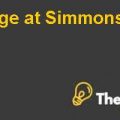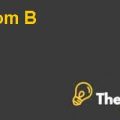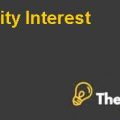
Overreact in the stock. Case Solution
Introduction:
Behavioral finance is open-minded finance; sometimes, in order to find the solution of any empirical puzzle, the investors in the stock markets try to make the decision on behavioral finance.
Most of investor will agree that behavior of the financial market is often far from rational. Behavioral finance deals with individual and ways to gathering and using information. It seeks to understand and predict financial markets. In addition to this, it focuses on application of psychological and economic principles in order to improve financial decision-making
Theories of behavioral finance
Investment managers care about the reaction of the financial market because they want to generate good returns for themselves as well as for their client. In order to create wealth, an investment manager has to understand how the market will operate and make strategies accordingly. The basic issue of the stock market is how price will react to new information. There are three approaches that investment management should pay attention to understand human behavior. There are three theories to make the investment decision. These theories are evidence of the market overreaction, and superior investment returns can be achieved by using any investment strategy
1. Price is right
The first theory is the efficient market hypothesis that is “price is right”. This means that market price will reflect all information at times and the investor cannot beat the market, the price of the stock changes is unpredictable, the reason for this is new information should more or less reflect the stock price. Therefore, the investor has to diversify their investment portfolio so that he can generate superior returns. If the good news incurs in the market, it will raise the share price. (Nath, 2015)This strategy can be represented in three different forms of market efficiency; strong form, semi-strong form, and weak form.
Strong form efficiency:
Strong form efficiency is where all public, personal and confidential information, is reflected in share prices. Therefore, investors are not able to achieve a competitive advantage and discourage insider trading.
Semi-strong efficiency
Semi-strong efficiency is market efficiency where the share price is the only publically available information. Since market prices already reflect public information, investors are not able to gain abnormal returns.
Weak form efficiency
Weak form efficiency is where today's price is reflected by the previous stock price. Therefore, in this weak form efficiency, technical analysis is not a practical tool to predict future price movements. However, each investor is able to analyze all information including, social media and internet. The investor is unable to monitor every piece of information. Therefore, it can be said that decision can be influenced by emotion rather than rationality.
2. Animal spirits
The market has a life of its own, the prices are driven by "animal spirits". In this investment strategy, investors will invest in the stock by studying the investor sentiment, initial public offering, and growth stock. If the investors believe that company has more growth opportunity, then most investors would like to buy the stock with this estimation that price of the stock would increase in future and an investor will able to sell stocks at a higher price in the market and earn profit by selling at higher price. (kaul, 2000)........................
This is just a sample partial case solution. Please place the order on the website to order your own originally done case solution.












